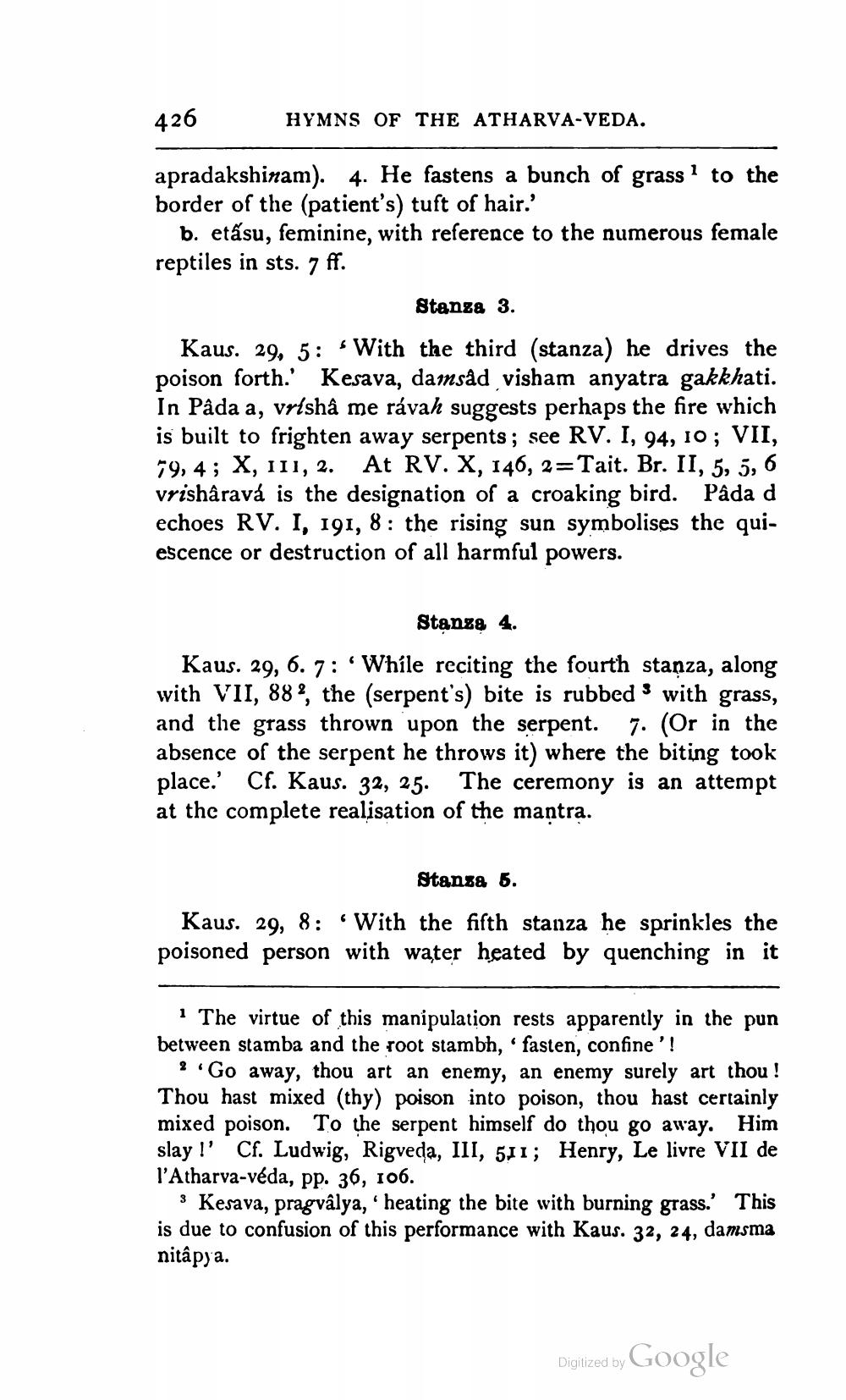________________
426
HYMNS OF THE ATHARVA-VEDA.
apradakshinam). 4. He fastens a bunch of grass to the border of the (patient's) tuft of hair.'
b. etásu, feminine, with reference to the numerous female reptiles in sts. 7 ff.
Stanza 3. Kaus. 29. 5: With the third (stanza) he drives the poison forth.' Kesava, damsåd visham anyatra gakkhati. In Pâda a, vrisha me rávah suggests perhaps the fire which is built to frighten away serpents; see RV. I, 94, 10; VII, 79, 4; X, 111, 2. At RV. X, 146, 2=Tait. Br. II, 5, 5, 6 vrishâravá is the designation of a croaking bird. Pâda d echoes RV. I, 191, 8: the rising sun symbolises the quiescence or destruction of all harmful powers.
Stanze 4. Kaus. 29, 6.7: 'While reciting the fourth stanza, along with VII, 88%, the (serpent's) bite is rubbed with grass, and the grass thrown upon the serpent. 7. (Or in the absence of the serpent he throws it) where the biting took place.' Cf. Kaus. 32, 25. The ceremony is an attempt at the complete realisation of the maộtra.
Stansa 6. Kaus. 29, 8: With the fifth stanza he sprinkles the poisoned person with water heated by quenching in it
1 The virtue of this manipulation rests apparently in the pun between stamba and the root stambh, 'fasten, confine '!
"Go away, thou art an enemy, an enemy surely art thou ! Thou hast mixed (thy) poison into poison, thou hast certainly mixed poison. To the serpent himself do thou go away. Him slay !' Cf. Ludwig, Rigveda, III, 511; Henry, Le livre VII de l'Atharva-véda, pp. 36, 106.
3 Kesava, pragvâlya, 'heating the bite with burning grass.' This is due to confusion of this performance with Kaus. 32, 24, damsma nitâpya.
Digized by Google




